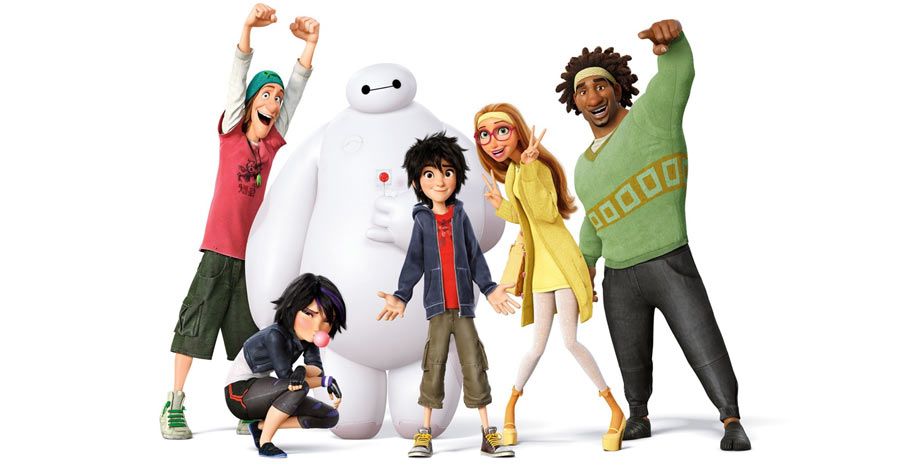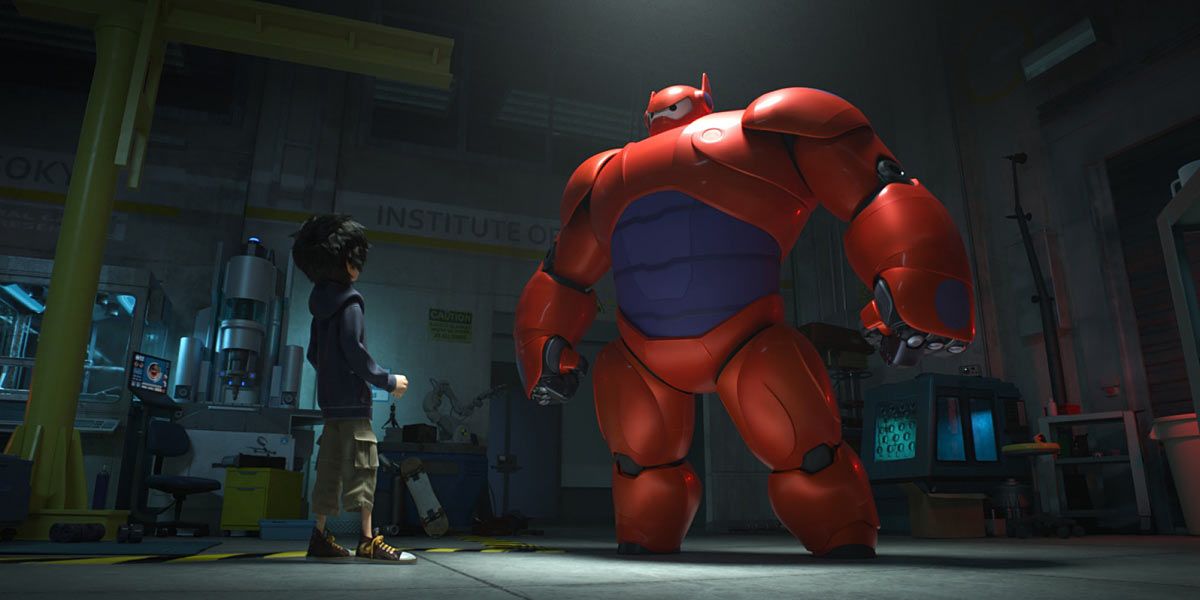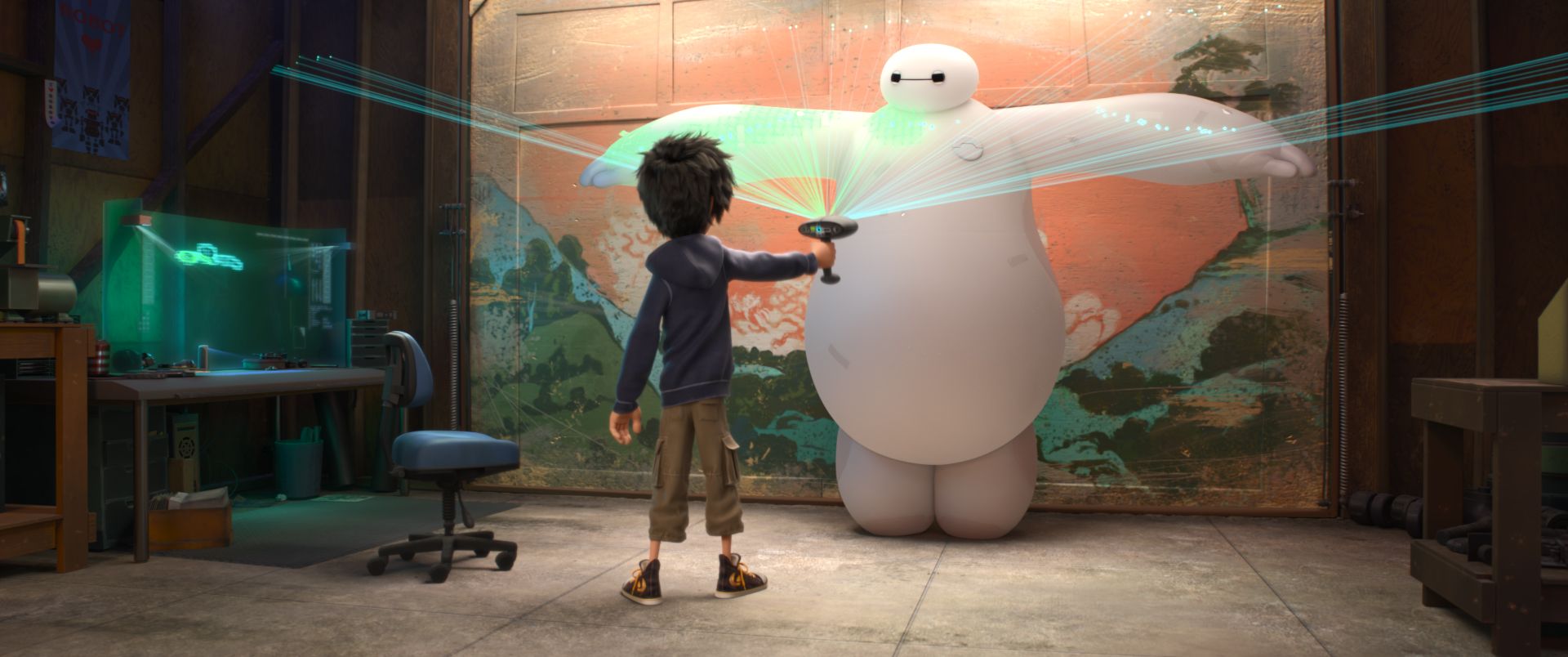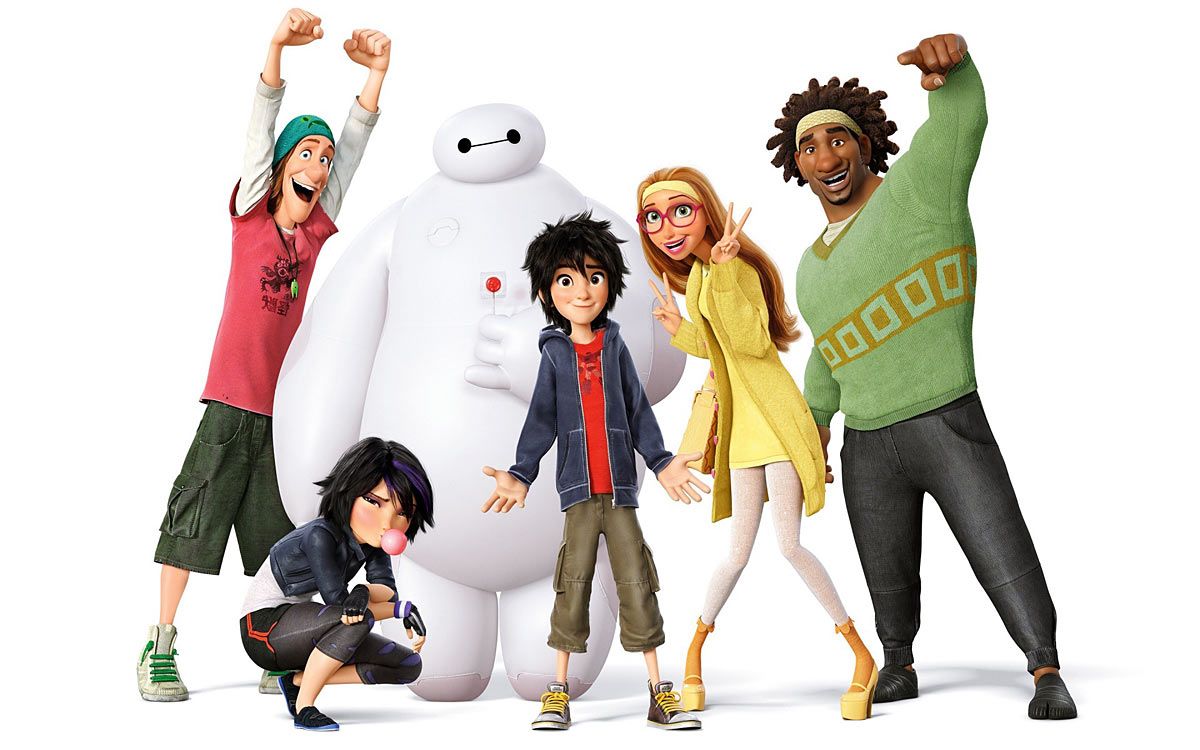Talk about a team dynamic!
Not only do the onscreen partnerships in "Big Hero 6" between tween genius Hiro, his protective health care robot Baymax and the rest of the hastily assembled super-team power up the film, some key behind-the-scenes collaborations add to the punch -- most notably the pairing of Disney's cinematic storytelling standards and the Marvel tradition of comic book action, and the team-up of directors Don Hall ("Winnie the Pooh") and Chris Williams ("Bolt").
Disney's Second "Big Hero 6" Trailer Arrives
In an exclusive conversation with Comic Book Resources, the filmmakers reveal just how tricky it was to blend the best of two legendary storytelling styles into one movie, cracking the tone and pace of the film, and packing the screen with a bar-raising level of cinematic detail -- including a few not-so-familiar faces from the Marvel Universe.
CBR News: Tell me about really blending that essence of Disney, which I think you caught, and the essence of Marvel, which is also strong in the film. How tricky it was to get the right balance of both of those iconic storytelling brands?
Don Hall: Well, the story is always the biggest challenge we face here, more so than any technical challenge. I don't know if I would categorize it as a getting the right blend of Disney or the right blend of Marvel, but it really was about how to integrate this emotional story about this 14-year-old super genius who loses his brother, and the brother's robot who becomes the agent of healing for this kid -- this sort of surrogate big brother; how to integrate that idea with the idea of a superhero origin story, because those could be -- and were for a while -- very different stories. And it wasn't until we came upon the idea that Baymax would be sort of proactive in healing Hiro and bringing these friends of Tadashi into the mix as a support group that both stories merged together thematically into one cohesive whole.
Chris Williams: Yeah, I think that both Disney Animation and Marvel have a lot of things in common. I think that I felt early on a real kinship with the Marvel guys and a sense that we spoke the same language and had the same priorities. They really cared deeply about their characters and they're really passionate about telling great stories and trust that the success will follow if they tell great stories. So I think there's a lot of overlap there. I would say that knowing going into it people were going to know it was inspired by Marvel property, I think there was an onus on us to create really fun and over the top action scenes. We had a lot of action in this film, and action scenes with very different sort of tones to them. And so we wanted to hold ourselves to a really high standard when it came to the action in the film. But we also knew this was going to be a Disney film and part of the Disney lineage, and I think in order to sort of sit alongside "Pinocchio" and "Bambi" and all the rest of them, I think it has to have a real timeless quality, and it has to have a real universal emotion. It really has to touch people, and so those are elements that we certainly wanted to bring to the movie.
Another thing that it has is an astonishing level of beauty, in just the visual look of the film. It feels like there was a bar raised on this one. Tell me about the challenges of getting all of that detail and all of the ambience into scenes that are both intimate and the big action extravaganzas.
Hall: Yeah, we knew we wanted to kind of raise our game in terms of visuals and we wanted a very cinematic approach to the story -- which meant very cinematic lighting and camera choices that would favor a little bit more like live-action camera choices. So we put a stake in the ground and said art direction-wise it's going to be a very complex, detailed world, with very simple and relatively stylized characters. So at least we had that sort of broad parameter with which to make things read. Because if you got a complex world, and complex characters -- "Tekkonkinkreet" was actually one we looked at it early on, the anime, where they do have a very dense, detailed world. But the characters are very simple. And they had to do that to make things just read, so we took that, the lesson from that film and applied to this. And we wanted it to feel like a rich, real place. We wanted San Fransokyo to feel like you've heard about it and been there. Especially once you've seen the movie, you felt like you've been there.
NYCC: Disney Rolls Out "Big Hero 6" Sizzle Reel
Williams: We would love to take all the credit for everything you saw in the movie. But we definitely have to give credit to Paul Felix and Scott Watanabe, the production designer and art director of environments, because they really wanted to create a world that felt like it had a history and was very dense and populated, and lived in. And that's not an easy thing to do. Because everything you see in a CG animated film has to be thought up and designed and modeled and have look applied, and so everything is work. And that's why sometimes CG movies can have a sort of empty, kind of sterile feeling to them. And Paul and Scott and the entire Vis-Dev department were always trying to combat that feeling. And give you a world that feels lived in, and a world that feels like we understand what's outside of the frame, not just what's in the frame. And I always think about my experience watching "Blade Runner" when I was a kid and feeling like it was a really immersive world where they understood their world in a really complete way. And you don't get that feeling very often. And we wanted to have it in this movie.
Amid all that rich detail, I happened to catch a couple of Marvel Easter Eggs...
Williams: What'd you see?!
A gentleman named Orka, a fellow named Black Talon...
Hall: Awesome! Yeah, there are several Disney Easter Eggs in there, obviously. Some have been reported on, just from the trailers and teaser stuff. But there's a few Marvel ones. And again, we never wanted to break the reality of the world. We never wanted to confuse the audience, to say that Iron Man lives in a world where there's San Fransokyo. We definitely wanted separation early on. In earliest discussions with Marvel, they really encouraged us to make a world and create our own world to set the story -- that's what led to San Fransokyo, actually. That said, they were very gracious to provide us with a few... what? Z-level characters maybe, that we can maybe stick in Fred's room. The Orka guy's there -- there's a few more.
Williams: You have to wait for the Blu-Ray to pick them all out. We don't want to say too much because we want people to have the fun of finding them themselves. But we certainly, here at Disney Animation, we have fans of animation, but also fans of Marvel that are very eager to plan lots of these funny Easter Eggs -- to the point where Don and I really had to step in and say, "Okay, enough! We're putting a moratorium on Easter Eggs because they're everywhere." But it'll be fun for the audience, I think.
As you really dug into it, what did you find to be the biggest challenge? Whether it was a fun challenge or a pain-in-the-butt challenge, what did you find was the biggest hurdle to deal with?
Hall: I think it was, again, what I alluded to earlier, which is the integration of these two separate stories, you know. The idea that the story of the kid who loses his brother, and the robot that heals him, and a superhero origin story. Those were two difficult stories to reconcile for the longest time into one cohesive whole. We did a lot of iterations before we finally found the connective tissue, really which was Baymax, who connected both of those stories.
Williams: Yeah we had the blending of these two distinct genres. We had the blending of the east and the west, and we had the Marvel and Disney of it.
Hall: And we had to think a story that tried to deal in a truthful way with the idea of loss. And we also had this pretty goofy comedy as well. And we had to find one personality for the movie that can house all these things. I think that was the unique challenge of this movie. And they're all hard. They're all challenging because that's just the way story is. But that was the specific challenge of this one.
Williams: I remember my first movie that I worked on in the story department was "Mulan," and I remember at the end of that experience talking with the story team and saying -- and I was very young at the time -- "Well, at least I got the hard one out of the way early in my career." Not realizing at the time that every story is hard. It's just what is specifically hard about each story changes.
Hall: Oh, young Chris Williams!
Williams: He was so naive. It's not going to get any easier.
Disney's "Big Hero 6" To Have Marvel Easter Eggs and Post-Credits Scene
I want to talk about finding the pitch perfect voice that has a sort of robotic aloofness, but there's also warmth in there as well. That had to be really tricky to find just the right tone for that character, as you did with Scott Adsit.
Williams: Yeah, it's also just the right actor, to be honest with you. It had to warm. It had to be compassionate -- that was where you started, but never forget that he's a robot and has to speak in some sort of familiar robot syntax. And when we found Scott, he's such an [improviser]. He's so great at improv. But the problem with Baymax is he doesn't really go off page. He doesn't really improv. He sees the world in a very pre-scripted way. So Scott really had to find little areas within the character to bring some of that nuance in. He brought a lot of warmth, and a lot of, actually, comedy in the timing of how he spoke as Baymax.
Hall: The detached version of warmth is a really hard thing to find. What was hard was finding Scott. Once we had him, everything was easy because he was so good at it. And he's such a genius because we were very restrictive with Baymax. We would say here's the spectrum you have to be in to be true to this character. And yet within that spectrum he was able to find these tiny little adjustments in timing so that either a line would have more emotion or more comedy. And only he could find those subtleties.
Tell me about what it meant to you to create this superhero team that has characters who are multi-ethnic, and they don't receive superhuman powers. They become superheroes because they're extremely smart. What does it mean to create characters in that realm?
Williams: That was an early stake planted in the ground. It just felt like we wanted to make this logical, believable, and grounded. And science was such a big part of the story because we're dealing with a protagonist being a super-genius, and his brother being a roboticist as well -- and the idea of no super powers was a nice limitation to play with, because it meant we had to find more creative solutions, and what was going to be the dynamic of this superhero team. And I love the Avengers -- it's a weird mix of a God of Thunder and a Jekyll and Hyde beast man like the Hulk who's been radiated with gamma rays, and a super-soldier -- but I wanted our story and our superheroes to be really grounded in a reality. It just made us really delve into the research, and find ways for these guys to be super using, basically, their intelligence, and their gifts as super smart science kids.
Hall: I think one of the things that I'm really proud of in this movie is the fact that we do have a very multi-cultural cast of characters. And yet at the same time it's not presented like it's a big deal. It reflects the world as it is, and we didn't want any way for the characters to be defined by their race, of course. And so I'm really proud of how that's all turned out.
"Big Hero 6" arrives in theaters Friday, Nov. 7.




